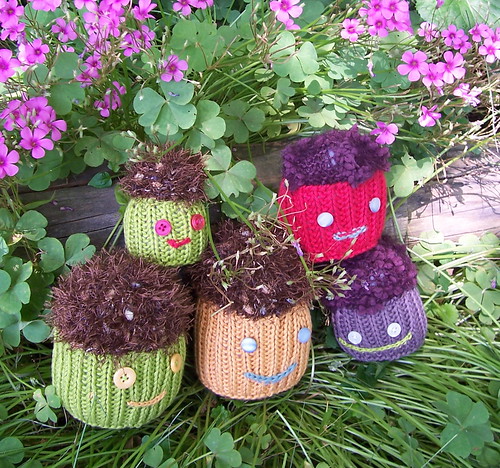
I have been reading about handmade deodorant for a few years now, but was always a bit skeptical. Each recipe seemed to involve melting stuff, or buying bulk ingredients to use in small amounts- not super practical. I have been off the traditional antiperspirant & deodorant for a long time since it is full of scary stuff like aluminum, phthalates & fragrance [See Secret Wide Solid's rating at Skin Deep] which is liked to neurological problems, cancer and reproductive toxicity. And there is an excessive amount of plastic used for each tube. Instead I used Trader Joe's deodorant which was pretty safe, eco friendly, and cheap. I saw no reason to make things more complicated for myself.

But here's the catch: I loved the Trader Joe's deodorant, and Toms of Maine, and other non-toxic deodorants I have used BUT they don't really work that well. I feel bad saying it, but they quit by the end of the day. I just assumed that was the nature of using non-toxic deodorants and have lived with it for far too long. Until now.
I came across this recipe, from this website and I had all the ingredients in my kitchen already. Plus there was no heating involved. But what really caught my attention was the rave reviews. And I am here to add to those reviews.
Let me say it loud and clear: THIS STUFF WORKS FOR ME. And it works all day, and in to the next. In fact, since I switched, I have not had one single moment of smelliness. Total awesomeness.
UPDATE: There is an instructional video and FAQ from the og website here: http://www.passionatehomemaking.com/2013/01/homemade-all-natural-deodorant.html

Homemade Amazing Deodorant:
Adapted from Passionate Homemaking
The original recipe calls for either corn starch or arrowroot powder, but since I had both, I used both. Some folks complained about irritation in the comments due to the amount of baking soda- and found that using less helped. I have had no problem with the amount of baking soda so I will continue with these proportions. Also the coconut oil can go from solid to liquid depending on the storage temperature. Mine stays at a perfect semi-solid in my bathroom, and melts to an oil when I rub between my fingers.
5-6 tablespoons coconut oil
1/8 cup arrowroot powder
1/8 cup cornstarch
1/4 cup baking soda
Several drops of bergamot oil [optional]
Mix the powders together in a jar and slowly add the coconut oil until you have a "pomade" consistency and powders are mostly dissolved. Add a few drops of oil until it has a lovely hint of scent.

To use, scoop out a pea sized amount and rub between your fingers to melt and create a smooth texture. Apply under your arms and rub any left into your hands as a moisturizer.
Since the coconut oil changes rapidly from a solid to a liquid I would not recommend trying to use a traditional deodorant "stick" but rather to scoop from the jar.
If you are at all hesitant about making your own, this is the recipe that will win you over! Non toxic, plastic free, sustainable, and extremely effective. Total win-win.
Cheers!
EDIT:
I would like to answer some questions from the comments. Please note that I am not a deodorant expert in anyway. I found this recipe on the internet and have been using it for 3+ years. I am just sharing & reviewing my experience with the recipe. Click the links above for the original recipe and read through the comments for more information.
Does the coconut oil cause oily stains on your clothes?
I haven't had any problems with staining. Test it out on an old shirt and let it dry first if you are nervous.
Just for clarification, this is just a deodorant, not an antiperspirant, right?
Yes, this is more of a deodorant than an antiperspirant BUT I have noticed considerably less sweating? It might be the corn starch or baking soda? Or just my body since I haven't used antiperspirant in 10 years and don't notice sweating that much anymore.
I am allergic to coconut so I was wondering what could be substituted for coconut oil?
For oil substitute? I don't know. Something shelf stable? Coconut oil is stable, anti-fugal and anti-bacterial which is why it works. Other homemade deodorant recipes use Shea butter- you might want to find a different recipe.
I really want to try this but I can't find arrowroot anywhere. Was wandering if maybe tapioca starch or anything else could be substituted?
You can find arrowroot in the spice section of the grocery stores. See jar pictured above. Other stores may have it in the baking section. Not sure about tapioca- but you can sub with corn starch.
We don`t want her using all that chemical on her. Has anyone used this for kids?
I have not tried this on a kid. I would test a small patch first for irritation. The baking soda can be harsh.
AND, I have one. I absolutely cannot stand Coconut. I even gag with the smell. I wish I wasn't like that, but I am. What can I substitute? Someone, Please help. :)
For oil substitute? I don't know. Something shelf stable? Coconut oil is stable, anti-fugal and anti-bacterial which is why it works. Some refined coconut oils do not smell like coconut- those might be your best bet. Other homemade deodorant recipes use Shea butter- you might want to find a different recipe.
You know your body best and can figure out what works for you.
UPDATE: There is an instructional video and FAQ from the og website here: http://www.passionatehomemaking.com/2013/01/homemade-all-natural-deodorant.html
EDIT:
I would like to answer some questions from the comments. Please note that I am not a deodorant expert in anyway. I found this recipe on the internet and have been using it for 3+ years. I am just sharing & reviewing my experience with the recipe. Click the links above for the original recipe and read through the comments for more information.
Does the coconut oil cause oily stains on your clothes?
I haven't had any problems with staining. Test it out on an old shirt and let it dry first if you are nervous.
Just for clarification, this is just a deodorant, not an antiperspirant, right?
Yes, this is more of a deodorant than an antiperspirant BUT I have noticed considerably less sweating? It might be the corn starch or baking soda? Or just my body since I haven't used antiperspirant in 10 years and don't notice sweating that much anymore.
I am allergic to coconut so I was wondering what could be substituted for coconut oil?
For oil substitute? I don't know. Something shelf stable? Coconut oil is stable, anti-fugal and anti-bacterial which is why it works. Other homemade deodorant recipes use Shea butter- you might want to find a different recipe.
I really want to try this but I can't find arrowroot anywhere. Was wandering if maybe tapioca starch or anything else could be substituted?
You can find arrowroot in the spice section of the grocery stores. See jar pictured above. Other stores may have it in the baking section. Not sure about tapioca- but you can sub with corn starch.
We don`t want her using all that chemical on her. Has anyone used this for kids?
I have not tried this on a kid. I would test a small patch first for irritation. The baking soda can be harsh.
AND, I have one. I absolutely cannot stand Coconut. I even gag with the smell. I wish I wasn't like that, but I am. What can I substitute? Someone, Please help. :)
For oil substitute? I don't know. Something shelf stable? Coconut oil is stable, anti-fugal and anti-bacterial which is why it works. Some refined coconut oils do not smell like coconut- those might be your best bet. Other homemade deodorant recipes use Shea butter- you might want to find a different recipe.
You know your body best and can figure out what works for you.
UPDATE: There is an instructional video and FAQ from the og website here: http://www.passionatehomemaking.com/2013/01/homemade-all-natural-deodorant.html










